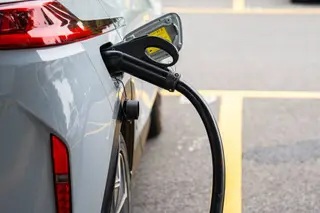A Complete Guide to Commercial EV Charging Station Installations
Introduction
The shift to electric mobility is transforming transportation worldwide. As adoption of electric vehicles (EVs) accelerates, the need for accessible, reliable charging infrastructure has never been greater. While home charging remains common, commercial EV charging stations are quickly emerging as a cornerstone of sustainable infrastructure.
For businesses, municipalities, and property owners, installing EV chargers is more than just an environmental initiative. It’s a strategic investment—boosting property value, enhancing customer and employee satisfaction, unlocking new revenue streams, and strengthening sustainability credentials. From office parks and retail centers to hospitals and universities, charging infrastructure is becoming an essential amenity with long-term benefits.
This guide explores the best locations for commercial EV charging, the step-by-step installation process, and key industry trends driving the future of sustainable transportation.
Why Commercial EV Charging Matters
1. Sustainability Leadership
With ESG commitments under increasing scrutiny, EV chargers offer a visible and measurable step toward reducing carbon emissions.
2. Higher Property Value
Future-ready infrastructure makes commercial properties more attractive to tenants, buyers, and investors.
3. Customer Attraction and Retention
Shoppers and visitors often choose destinations with charging options—and they stay longer, spending more in the process.
4. Employee Engagement
Workplace charging improves job satisfaction and talent retention. The U.S. Department of Energy reports that 80% of employers offering charging see positive impacts on recruitment and retention.
5. New Revenue Streams
With the right pricing model, charging stations generate income while offsetting installation and operational costs.
6. Incentives and Credits
Governments at federal, state, and local levels continue to provide significant financial support for early adopters.
Ideal Locations for Commercial EV Charging Stations
Workplaces
Employees spend long hours on site, making offices and corporate campuses natural charging hubs.
- Benefit to employees: Convenient daily charging reduces range anxiety.
- Benefit to employers: Stronger ESG performance and improved recruitment.
Retail Districts and Shopping Centers
Customers spend one to three hours in stores—ideal for mid-level charging.
- Business advantage: Longer dwell times and increased spending.
- Competitive edge: Attracts EV drivers actively seeking charging amenities.
Public Service Institutions
Hospitals, universities, libraries, and government buildings serve large, diverse populations.
- Community value: Broad access fosters goodwill and visibility.
- Sustainability gains: Supports certifications such as LEED.
Hotels and Hospitality
Guests parking overnight benefit from full charging access.
- Market advantage: Differentiates hotels and resorts.
- Guest experience: Increasingly expected by eco-conscious travelers.
Transportation Hubs
Airports, train stations, and bus depots are natural high-demand charging locations.
- Revenue potential: Long-term parking with charging provides premium services.
Step-by-Step Installation Process
Step 1: Secure Internal Buy-In
Build consensus with leadership and stakeholders by highlighting ROI, sustainability impact, revenue opportunities, and competitive advantage.
Step 2: Partner With a Solutions Provider
From hardware selection to software integration, an experienced partner ensures smooth delivery. Look for turnkey providers offering:
- Equipment consultation (AC vs. DC fast charging)
- Electrical infrastructure upgrades
- Payment and user management software
- Ongoing maintenance and support
Step 3: Site Validation and Valuation
A technical assessment typically includes:
- Electrical capacity review
- Site layout and efficiency planning
- Cost and ROI modeling
- Incentive and grant identification
- Compliance with codes and regulations
Step 4: Site Development
Activities include finalizing designs, submitting incentive applications, coordinating with utilities, and securing permits.
Step 5: Engineering, Procurement & Construction (EPC)
Execution covers equipment installation, utility connections, inspections, and commissioning. Timelines vary from a few weeks to several months depending on scale.
Step 6: Operations & Maintenance
Ongoing monitoring, customer support, warranty management, and regular servicing extend station lifespan (10–15 years) and protect ROI.
Future Trends in Commercial EV Charging
- Ultra-Fast Charging: High-capacity DC fast chargers reduce charge times to minutes.
- Smart Charging & Load Management: Software balances energy demand and lowers utility costs.
- Integration with Renewables: Pairing EV chargers with solar panels and battery storage strengthens sustainability.
- Bidirectional Charging (V2G): EVs will soon feed energy back to the grid, creating new revenue opportunities.
- Flexible Payments: Contactless cards, mobile apps, and subscription models will enhance convenience.
Conclusion
Commercial EV charging is no longer a luxury—it is essential infrastructure. Businesses that invest now will secure financial incentives, attract customers and employees, and establish themselves as sustainability leaders.
From workplaces and shopping centers to hospitals, hotels, and transit hubs, the opportunities are vast. With a structured approach and the right partners, organizations can overcome technical challenges and unlock long-term value.
As EV adoption accelerates, the question is not if to install EV chargers, but when. The answer is clear: the time is now. It's important to know about Google SEO to help your website rank higher in search results.





Comments